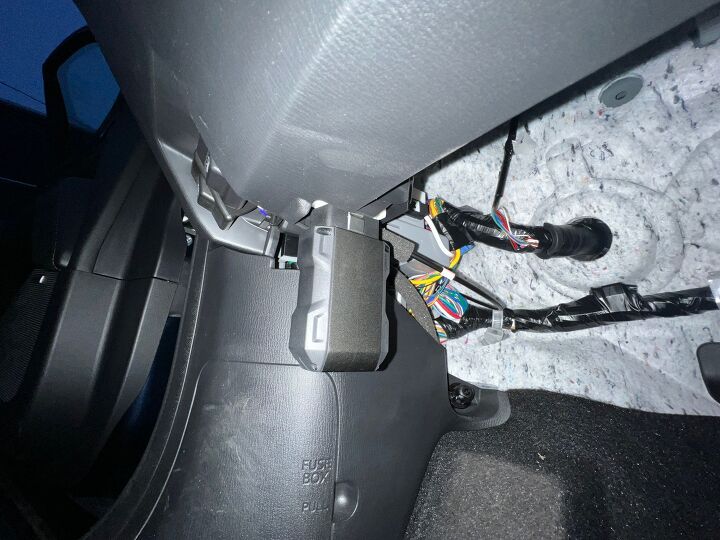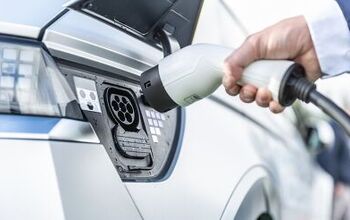What Info Can an OBD2 Scanner Tell Me?

An OBD2 (On-Board Diagnostics II) scanner can provide information about the status and health of various vehicular systems. This information can help inform the user as to what the source of a problem may be, which can in turn help lead to what needs to be repaired or replaced. In this article, we will dig into the types of information that an OBD2 scanner can retrieve from the vehicle and provide for your interpretation.
Promoted Product: TOPDON TopScan
Small enough to disappear in your pocket, the TOPDON TopScan that pairs with your phone and turns it into the perfect scan tool. To use it, just plug the TopScan into the OBD2 port of your vehicle and open the TopScan app on your phone.
You can use the TopScan to clear fault codes, but it does a whole lot more than that. It offers advanced diagnostics, allowing you to scan all vehicle systems – everything from engine and transmission to airbag, ABS, and air conditioning.
There are two versions of the TopScan – Lite and Pro. The TopScan light offers 8 reset function, while the Pro offers an additional 5 advanced functions.
If the TopScan does find a problem, you can access a DTC Repair Guide to process fault codes and get some guidance on making any necessary repairs. And with TopScan’s bi-directional control, you can access vehicle-specific subsystems and component parts. This lets users analyze and locate faulty parts quickly and easily.
You can also use the TopScan to access your vehicle’s subsystems and component parts to locate faulty parts so you know exactly what needs your attention.
TopScan is outfitted with AutoVIN and AutoScan functions. AutoVIN quickly identifies vehicle information such as make, model, and year, while AutoScan detects vehicle systems and retrieves DTCs.
If you are in the market for a compact and versatile OBD2 scanner so you can diagnose your vehicle without taking it to a garage, the TOPDON TopScan is well worth checking out.
OBD2 scanners are invaluable tools when it comes to diagnosing and subsequently repairing a vehicle. The assortment of information they can unearth is enormous and extremely useful, providing particulars that ultimately aid in a fix. What follows is some of what an OBD2 scanner can provide:
Diagnostic Trouble Codes (DTCs): OBD2 scanners can read and interpret DTCs, which are codes that indicate issues within the vehicle's systems. These codes can help identify specific problems that may be affecting the engine, transmission, emissions, and other components. DTC has come to be the generic acronym used for the codes that a scanner pulls, so don’t be surprised to hear this used interchangeably throughout conversations surrounding the diagnosis of a vehicle’s problems.
Check Engine Light (CEL) Status: The CEL is the illuminated symbol of doom for some, but its appearance doesn’t tell even the start of the story. An OBD2 scanner can check the status of the check engine light and provide information about the specific issue triggering the light, helping make sense of what might be mysterious.
Live Data: Some OBD2 scanners can display real-time data from sensors and systems in the vehicle. This may include information such as engine RPM, coolant temperature, vehicle speed, oxygen sensor readings, and more. We’re particularly fond of the OBD2 scanners that display things like transmission temperature, which is a vital thing to monitor when towing or off-roading.
Readiness Monitors: OBD2 scanners can show the status of readiness monitors, which are self-tests that the vehicle's emissions control system performs. This information is useful for emissions testing; sometimes when replacing components to help pass an emissions test, the vehicle needs to re-learn the parameters. In order for this to happen, the car may need to be driven a certain number of miles. This number varies, but figure 50 miles at a minimum. An OBD2 scanner can tell when those monitors have hit their readiness threshold, at which point a vehicle can be run back through an emissions test.
Vehicle Information: The scanner can retrieve details about the vehicle, such as its VIN (Vehicle Identification Number), calibration IDs, and calibration verification numbers.
Oxygen Sensor Data: OBD2 scanners can provide data related to the performance of oxygen sensors, helping diagnose issues with fuel efficiency and emissions. This is also helpful in turning performance cars.
Resetting Codes: Some OBD2 scanners allow users to clear diagnostic trouble codes after addressing the underlying issues. However, it's important to note that clearing codes without fixing the problem may-- and likely will-- result in the issues recurring. In some instances though, like a loose gas cap that caused a CEL and didn’t reset itself, clearing the code is likely to be a quick solution.
Vehicle Performance Monitoring: Advanced OBD2 scanners may offer additional features such as performance monitoring, fuel efficiency analysis, and trip data recording. They can provide information on real-time RPM and speed readings, run time after a restart, average speed, and so on.
It's important to mention that the specific information available can vary depending on the scanner's capabilities and the vehicle's make and model. OBD2 scanners are widely used for diagnostic purposes and can be helpful for both professional mechanics and vehicle owners in identifying and addressing issues with their vehicles. Some more basic scanners will only read codes, while more advanced (and generally expensive) OBD2 scanners provide the user with more info.
In terms of the specifics, here are some common types of codes that an OBD2 scanner can supply:
- P-Codes (Powertrain Codes):
- P0xxx: Generic powertrain codes
- P1xxx: Manufacturer-specific powertrain codes
- B-Codes (Body Codes):
- B0xxx: Generic body codes
- B1xxx: Manufacturer-specific body codes
- C-Codes (Chassis Codes):
- C0xxx: Generic chassis codes
- C1xxx: Manufacturer-specific chassis codes
- U-Codes (Network Communication Codes):
- U0xxx: Generic network communication codes
- U1xxx: Manufacturer-specific network communication codes
It's important to note that while OBD2 scanners can provide valuable information about potential issues, they do not necessarily pinpoint the exact cause of a problem. Additional diagnostics and expertise may be needed to address and resolve specific issues with your vehicle.

Ross hosts The Off the Road Again Podcast. He has been in the off-road world since he was a kid riding in the back of his dad’s YJ Wrangler. He works in marketing by day and in his free time contributes to Hooniverse, AutoGuide, and ATV.com, and in the past has contributed to UTV Driver, ATV Rider, and Everyday Driver. Ross drives a 2018 Lexus GX460 that is an ongoing build project featured on multiple websites and the podcast.
More by Ross Ballot




































Comments
Join the conversation